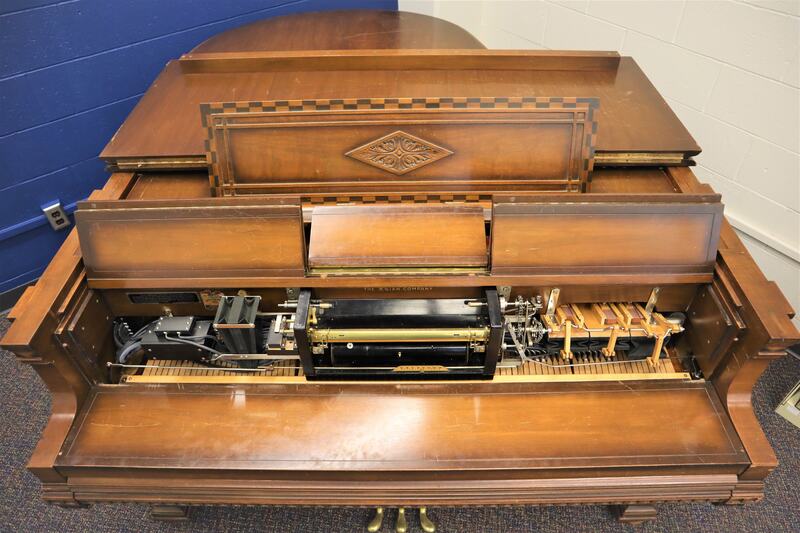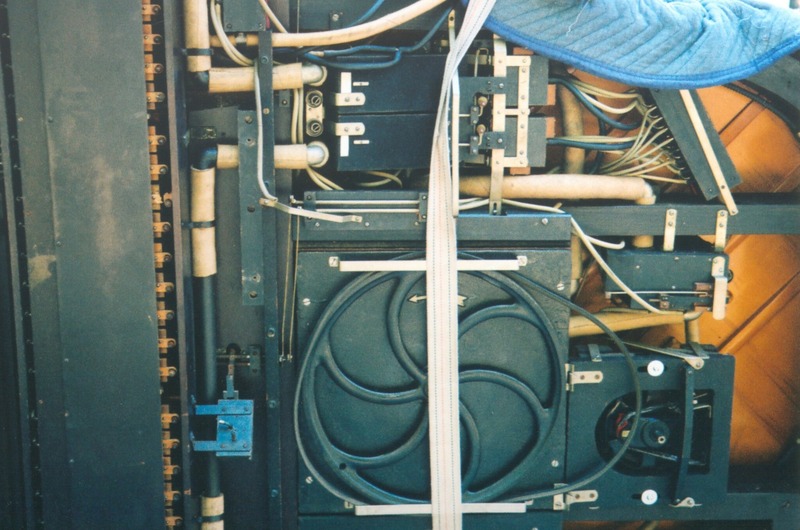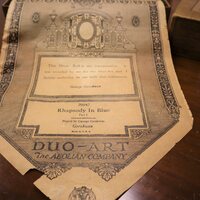Our Player Piano
MPAL’s Steinway Model M walnut piano was made in New York on October 4, 1927. Steinway made relatively few models over the years and the M was the most common size for a home piano. To make them “player ready” they had to lengthened the case somewhat (6″) to allow for the player installation (here by the Aeolian company), but the piano itself remained the Model M scale design. This piano was shipped to the Aeolian Company of New York City raw (with no lacquer), so the Aeolian Company most likely did the art work.
The University of Illinois School of Music inventory records indicate that the MPAL reproducing piano was purchased from Mrs. Lee Drendel in Springfield, IL; the date of the transaction is unknown.
Tip: Use the fullscreen option in the bottom right corner for easier navigation and viewing!
A player piano functions by using electric-powered bellows to suck air through a sensor bar called the "tracker bar". Whenever a perforated hole passes over the tracker bar, it allows air to pass into the player mechanism. This intake of air triggers a specific note to play at a certain time and in a certain way. See the bellows in action in the above recording of Alexander Scriabin's Prelude Op. 45 No.3 and Winged Poem Op.51 No. 3, performed by Sergey Prokofiev.
Below is a recording of Doug Roe performing a University of Illinois Medley - you can see the perforations move across the tracker bar more clearly in this video. You may also notice the lyrics of the medley scroll by on the right-hand side of the roll, printed in blue ink. The practice of printing the lyrics to a song on the roll itself was very common for rolls of popular music during the 1920s and 1930s, when the player piano was most popular. Rolls of this type were often known and labeled as "word rolls".
In 2017, MPAL received a generous grant from the University’s Office of the Vice Chancellor for Institutional Advancement and additional funding from the Dean of Libraries and University Librarian, John Wilkin, which made the renovation of the piano and creation of a secure room for it feasible. The piano and its case were renovated by The Piano People of Champaign, IL and the player mechanism was restored by Mel Septon of Player Pianos Plus in Northbrook, IL. Click the image below to see Mel's pictures from the renovation process.


